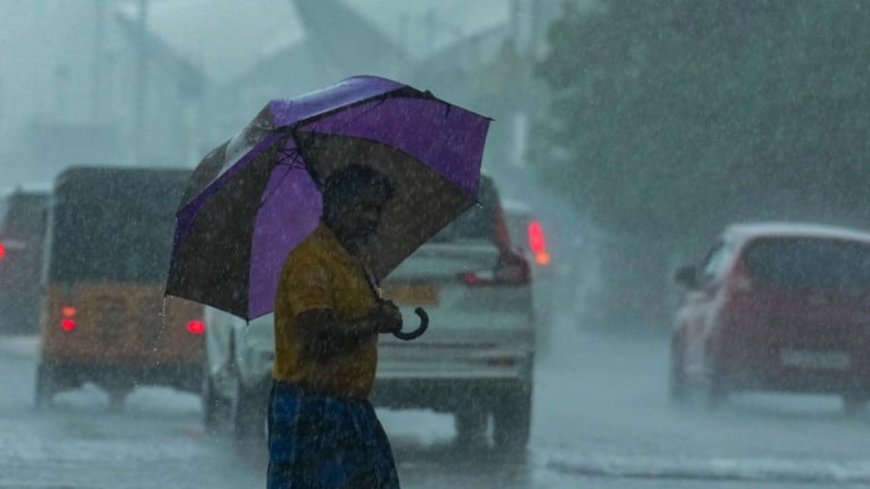Early Monsoon Showers Bring Relief to Scorching India
India welcomes early monsoon rains in 2025, bringing relief from heatwaves and boosting agricultural optimism. Read the full report.

India has received an early gift from the skies this year, as the southwest monsoon made a timely and stronger-than-expected onset, providing much-needed relief from weeks of record-breaking heatwave conditions across several states.
According to the India Meteorological Department (IMD), the monsoon arrived over the Kerala coast on May 26, nearly three days ahead of the usual June 1 timeline. This early arrival, experts say, signals the likelihood of a normal to above-normal monsoon season, bringing both respite and agricultural optimism.
Scorching Summer Cut Short
In the weeks leading up to the monsoon, regions across North and Central India faced temperatures consistently soaring above 45°C (113°F). States like Rajasthan, Uttar Pradesh, and parts of Madhya Pradesh experienced severe heatwaves, prompting school closures, reduced working hours, and a surge in hospital admissions due to heatstroke and dehydration.
“This early onset of monsoon is timely and significant. Not only does it break the extreme heat pattern, but it also reduces the risk of prolonged drought,” said Dr. M. Ravichandran, Secretary of the Ministry of Earth Sciences.
Agricultural Outlook Brightens
The southwest monsoon is crucial for India’s kharif crop cycle, which includes staples like rice, pulses, and oilseeds. Nearly 60% of India’s farmland depends on monsoon rainfall, especially in regions with limited irrigation infrastructure.
According to agricultural economists from ICAR – Indian Agricultural Research Institute, early rains could lead to:
-
Timely sowing of crops
-
Better soil moisture retention
-
Improved rural employment through early MGNREGA work cycles
-
Reduced dependence on groundwater irrigation
This may translate to lower food inflation and better supply chain stability in the coming months.
Urban India Sees Early Relief
Metro cities like Mumbai, Bengaluru, and Chennai have already begun to experience pre-monsoon showers. Delhi NCR, which endured sweltering temperatures crossing 47°C, is expected to receive moderate rains by early June.
Municipal corporations in major cities are now accelerating pre-monsoon desilting and drainage readiness, as seen in Mumbai's disaster preparedness update.
Environmental experts urge that while the rains bring relief, urban flooding remains a looming challenge due to poor drainage systems and unchecked construction. This highlights the need for climate-resilient infrastructure, especially in Tier-1 and Tier-2 cities.
Climate Change and the Early Monsoon Link
While early monsoons are not unheard of, their increasing frequency is being linked to climate change and oceanic shifts, including warming in the Indian Ocean Dipole (IOD) and El Niño/La Niña patterns.
As per a recent study by the Centre for Climate Change Research (CCCR), these erratic patterns could become more common, affecting crop predictability, water security, and disaster preparedness.
“Climate variability is intensifying. We are seeing shorter winters, longer summers, and monsoons that are harder to predict but more intense,” said Dr. Roxy Mathew Koll, leading climate scientist at the Indian Institute of Tropical Meteorology.
What Lies Ahead
The IMD’s long-range forecast projects that the monsoon will progress steadily across the country, covering central and northern states by the third week of June. While this bodes well for agriculture and energy consumption, experts recommend preparedness for localised floods and landslides, especially in the Northeast, Western Ghats, and Himalayan foothills.
Disaster management authorities, including the National Disaster Management Authority (NDMA), have already issued advisories for vulnerable zones, urging states to update their flood contingency plans.
Conclusion
The early arrival of the monsoon this year is more than a seasonal phenomenon — it's a climatic lifeline for a nation reeling under the impact of extreme heat, agricultural uncertainty, and growing water stress. With careful planning and infrastructure readiness, this monsoon could spell hope for millions — from farmers sowing seeds to urban dwellers seeking refuge from relentless heat.
As always, the rains bring renewal. But they also demand responsibility.


















































